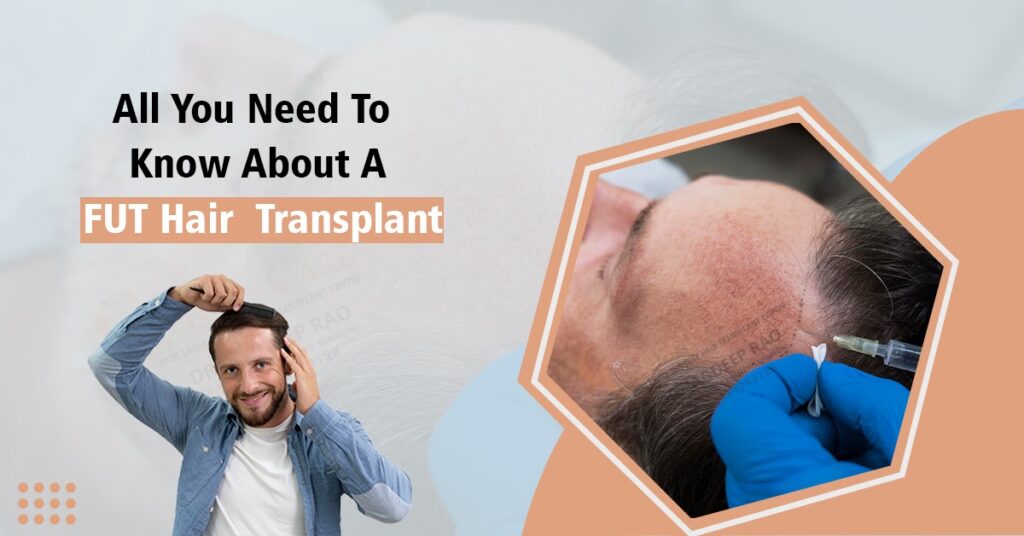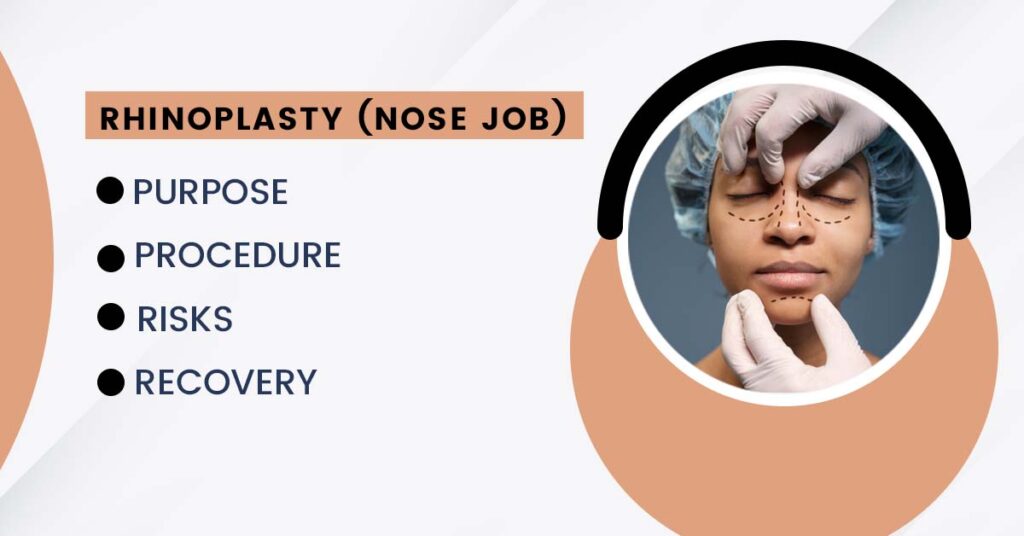Introduction
Follicular Unit Transplantation (FUT) is a revolutionary hair restoration procedure that has gained widespread popularity in addressing issues of hair loss and baldness. This surgical technique involves the removal of a strip of scalp from the donor area, typically the back or sides of the head, where hair follicles are more resistant to the effects of hormonal balding. The dissected strip is then meticulously divided into individual follicular units, each containing one to four hairs, which are subsequently transplanted into the bald or thinning areas of the scalp. As we delve into the intricacies of FUT Hair Transplant, this exploration will cover various aspects, including the procedure’s methodology, its advantages and drawbacks, recovery and aftercare, and the overall impact it has on individuals seeking a fuller head of hair. Join us on this journey to uncover the nuances of FUT transplantation and gain insights into one of the most significant advancements in the field of hair restoration.
Who Need FUT Hair Transplant
Follicular Unit Transplantation (FUT) is a surgical hair restoration procedure that involves the removal of a strip of scalp from the donor area, usually the back or sides of the head, and the transplantation of individual hair follicles to areas with thinning or balding hair. FUT may be a suitable option for individuals who experience certain types of hair loss or want to address specific concerns. Here are some common scenarios where FUT hair transplant might be considered:
● Androgenetic Alopecia (Genetic Hair Loss): FUT is often used to treat male and female pattern baldness, which is primarily caused by genetic factors and hormonal changes. It’s a common solution for those with significant hair thinning or balding in specific areas.
● Scar Revision: FUT can be used to revise or repair scars resulting from previous surgeries, injuries, or certain types of hair loss conditions. The transplanted hair helps cover and camouflage the scars.
● High Norwood Scale Cases: The Norwood scale is a classification system for male pattern baldness. In advanced cases (Norwood stages IV-VII), where there is extensive hair loss, FUT may be a suitable option to provide a larger number of grafts for transplantation.
● Limited Donor Area: In cases where the donor area for hair transplantation is limited, FUT can provide more grafts than other methods like Follicular Unit Extraction (FUE).
You can read also:- All You Need to Know About an FUE Hair Transplant
Follicular Unit Transplantation Method
Follicular Unit Transplantation (FUT) is a surgical hair restoration procedure that involves the following key steps along with recovery:
● Consultation and Planning: Before the surgery, a thorough consultation with a hair transplant specialist is essential. The surgeon will assess the patient’s hair loss pattern, discuss expectations, and determine the feasibility of FUT based on factors such as donor hair availability.
● Donor Area Preparation: The donor area is usually the back or sides of the head, where hair follicles are genetically resistant to balding. This area is trimmed, and the patient is prepared for the surgical procedure.
● Local Anesthesia: Local anesthesia is administered to numb both the donor and recipient areas. This ensures that the patient remains comfortable throughout the procedure.
● Strip Harvesting: The surgeon removes a thin strip of scalp from the donor area. The size and shape of the strip depend on factors such as the patient’s scalp laxity and the number of grafts needed. The incision is then closed using sutures or staples.
● Graft Preparation: The strip of the scalp is dissected under a microscope into individual follicular units. Follicular units typically contain one to four hairs each.
● Recipient Site Creation: Tiny incisions are made in the recipient area, where the patient is experiencing hair loss. The surgeon strategically places these incisions to achieve a natural-looking hairline and maximize the aesthetic outcome.
● Graft Placement: The individual follicular units are carefully inserted into the recipient sites. The surgeon pays attention to the direction, angle, and density of the transplanted hair to ensure a natural appearance.
● Postoperative Care: After the procedure, the patient is given instructions for postoperative care. This may include information on how to clean the scalp, use prescribed medications, and manage any discomfort.
You can read also:- How Many Grafts Do I Need For Hair Transplant
FUT hair Transplant Recovery
A hair transplant is a surgical procedure that involves moving hair follicles from one part of the body (usually the back or sides of the scalp) to another (typically the bald or thinning areas). The recovery process after a hair transplant can vary from person to person, and it depends on several factors such as the individual’s overall health, the extent of the procedure, and the specific techniques used.
Here is a general timeline for the recovery after a hair transplant:
● Immediate Post-Op Period (First Few Days):
○ You may experience some discomfort, swelling, and redness in the treated areas.
○ The surgeon may prescribe pain medications and antibiotics to prevent infection.
○ You will be advised to keep the head elevated and avoid any strenuous activities.
● First Week:
○ Swelling and redness typically start to subside.
○ Some scabbing may form around the transplanted grafts.
○ It’s crucial to follow the post-operative care instructions provided by your surgeon, including gentle washing of the recipient area.
● First Month:
○ The transplanted hair may initially shed, which is a normal part of the process.
○ You may still experience some redness and scabbing, but this should continue to improve.
○ It’s important to avoid direct sunlight and protect the scalp from exposure.
● First Three Months:
○ The majority of the transplanted hair will have shed by this point.
○ Hair follicles enter a dormant phase, and you may not see significant growth yet.
● Three to Six Months:
○ New hair growth begins, and you may start to see the first signs of improvement.
○ The appearance of the hair can be thin and uneven at this stage.
● Six to Nine Months:
○ Continued growth and improvement in hair density.
○ Hair starts to take on a more natural appearance.
● Nine Months Onward:
○ Most patients will see significant improvement in hair density and appearance.
○ Final results may take up to a year or more, and some individuals may experience continued improvement beyond this point.
Potential Side Effects of FUT
Like any surgical procedure, FUT may have potential side effects and risks. Here are some common side effects associated with FUT:
● Pain and Discomfort: Some level of pain or discomfort is common after the procedure. Your surgeon may prescribe pain medications to manage this during the initial days.
● Swelling and Bruising: Swelling and bruising around the eyes and forehead are not uncommon in the days following the surgery. This usually resolves on its own but can be more pronounced in some individuals.
● Scarring: FUT leaves a linear scar at the donor site where the strip of skin is removed. The size and visibility of the scar can vary depending on factors such as the surgeon’s skill, individual healing, and hair length. For those who prefer to keep their hair very short, the scar may be more visible.
● Numbness: Temporary numbness or tingling in the donor and recipient areas can occur due to nerve irritation during the surgery. This usually resolves over time as the nerves heal.
● Infection: Although rare, infections can occur at the surgical sites. Following proper post-operative care instructions, including keeping the scalp clean, can help minimize this risk.
● Bleeding: Some bleeding may occur during and after the procedure, but this is usually controlled by the surgical team during the operation. Excessive bleeding or prolonged bleeding should be reported to your surgeon.
● Hair Shock Loss: Some existing hair in the recipient area may be shed as a result of the trauma from the surgery. This is usually temporary, and new hair growth should occur as the scalp heals.
● Uneven Hair Growth: The transplanted hair may initially grow unevenly, and it might take several months for the hair to start growing uniformly.
● Cysts: Small cysts can develop at the transplant sites, but they are typically benign and resolve on their own. In rare cases, they may need drainage.
Cost, Time, & Conclusion
The cost of a Follicular Unit Transplantation (FUT) procedure in India can vary depending on various factors, including the clinic or surgeon’s reputation, location, and the extent of the hair transplant needed. FUT procedures in India could range from approximately ₹30,000 to ₹1,00,000 or more.
Keep in mind that prices may have changed since then, and it’s essential to consult with specific clinics or surgeons to get accurate and up-to-date information. Additionally, factors such as the number of grafts needed, the complexity of the procedure, and the surgeon’s experience can influence the overall cost.
Regarding the time taken for the FUT procedure, it typically requires several hours. The duration depends on factors such as the number of grafts to be transplanted and the surgical team’s efficiency. FUT is generally completed in a single session, although very large sessions may be split into two days.
As for the longevity of FUT results, the transplanted hair follicles are usually considered permanent. However, it’s important to note that the native hair in the recipient area may continue to thin over time due to the natural progression of hair loss. Therefore, while the transplanted hair should remain, the overall appearance may change as native hair continues to be affected by factors such as genetics and hormonal changes.
The growth timeline after a FUT procedure typically involves the shedding of the transplanted hair initially, followed by a period of dormancy before new hair growth begins. Results are usually visible after several months, and the final outcome may take up to a year or more to fully manifest.
It’s crucial to consult with a qualified and experienced hair transplant surgeon to discuss your specific situation, and expectations, and to get personalized information about the procedure, including its cost and potential outcomes. Additionally, make sure to inquire about post-operative care instructions and follow-up appointments for optimal recovery and results.







